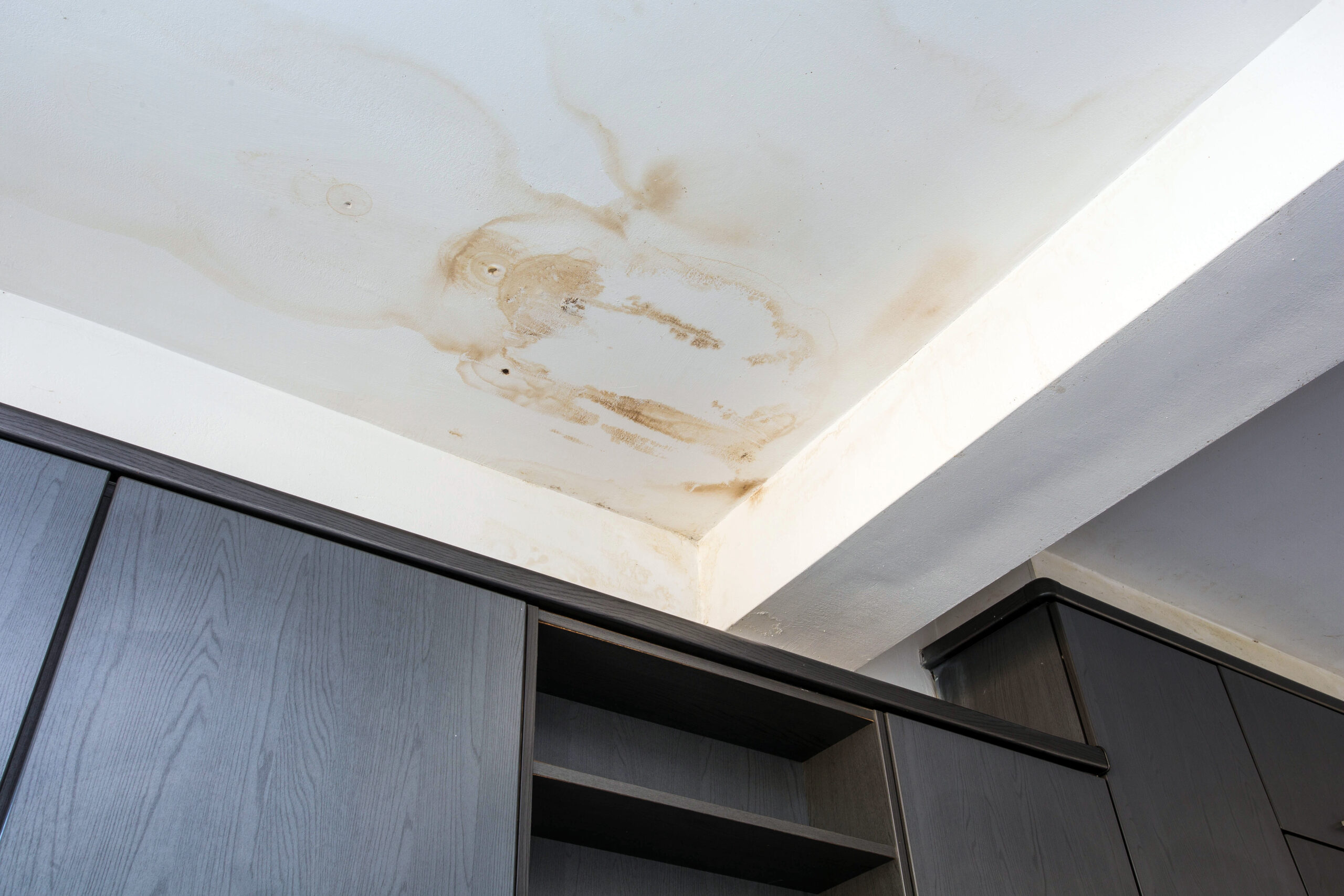Water damage is a homeowner’s worst nightmare, especially after a severe storm. Not only can water damage be costly to repair, but it can also lead to serious structural issues and health hazards if left unchecked. The key to minimizing the damage is early detection, so it’s crucial to know the signs of water damage in different areas and materials of your home. In this blog post, we’ll explore the common indicators of water damage and what to do if you spot them.
Water Damage on Ceilings and Walls
Stains and Discoloration
One of the most obvious signs of water damage on ceilings and walls is discoloration or staining. These spots often appear yellow, brown, or copper and can spread over time if the underlying issue isn’t addressed. Water stains typically indicate a leak from the roof, plumbing, or an upstairs bathroom.
Peeling or Bubbling Paint
Water trapped behind the paint on walls or ceilings can cause it to peel, bubble, or blister. This is a strong indication that moisture is seeping into the drywall, which can lead to mold growth if not treated promptly.
Sagging Ceilings
A sagging ceiling is a more severe sign of water damage, often due to prolonged exposure to moisture. This can be caused by a leak from above or accumulated water from a storm. A sagging ceiling can collapse if not addressed quickly, posing a safety hazard.
Water Damage to Floors
Warping or Buckling
Water damage to floors can cause them to warp or buckle, especially if they are made of wood or laminate. Warping occurs when the material absorbs water and expands, leading to uneven surfaces. Buckling is a more extreme form of warping, where the flooring lifts from the subfloor.
Soft or Spongy Spots
If your floor feels soft, spongy, or bouncy when you walk on it, this is a sign that water has penetrated the subflooring. This can happen if water seeps through the flooring material, such as from a flood or a leaking appliance.
Discoloration
Similar to ceilings and walls, water-damaged floors may show discoloration. This is especially true for carpets, which may develop dark or damp spots. Tiled floors may show signs of water damage through grout discoloration or loose tiles.
Water Damage to Windows and Doors
Condensation
While some condensation on windows is normal, excessive or persistent moisture can be a sign of water damage. This can indicate poor insulation, which allows moisture to seep into the window frame, leading to rot and mold.
Warped or Swollen Frames
Water can cause wooden window and door frames to warp, swell, or stick. If your windows or doors become difficult to open or close, this could be a sign that moisture has penetrated the wood.
Peeling Paint or Varnish
Water damage can cause the paint or varnish on window and door frames to peel or crack. This is often a sign that moisture is trapped beneath the surface, potentially leading to more serious damage if not addressed.
Water Damage Basements and Crawl Spaces
Dampness or Musty Odors
Basements and crawl spaces are particularly vulnerable to water damage due to their proximity to the ground. A damp, musty smell is a clear sign of moisture, which can lead to mold growth. This odor often indicates that water is seeping into the basement, either through the walls, floor, or foundation.
Efflorescence
Efflorescence is a white, powdery substance that appears on basement walls. It occurs when water seeps through the wall, bringing soluble salts to the surface as it evaporates. While efflorescence itself isn’t harmful, it indicates that water is penetrating the walls, which can lead to more serious issues over time.
Foundation Cracks
Cracks in the foundation walls can allow water to seep into your basement or crawl space. These cracks can be caused by shifting soil or pressure from water-saturated ground after a heavy storm. It’s essential to address foundation cracks promptly to prevent further water intrusion and structural damage.
Water Damage to Attics and Roofs
Water Stains on Rafters or Insulation
Water stains on attic rafters or insulation are a sure sign of a roof leak. These stains may appear as dark spots or streaks and can lead to mold growth and structural damage if not repaired.
Damaged or Missing Shingles
After a storm, it’s important to inspect your roof for any damaged or missing shingles. These can allow water to penetrate your roof, leading to leaks and water damage in the attic and beyond.
Mold Growth
Mold in the attic is a serious issue that often results from water damage. Mold can spread quickly in warm, damp environments and can cause health problems for you and your family.
What to Do If You Spot Signs of Water Damage
If you notice any of these signs of water damage in your home, it’s crucial to take action immediately. Ignoring the problem can lead to more extensive damage, higher repair costs, and potential health risks. Here’s what you should do:
- Identify the Source:
- Determine where the water is coming from. Whether it’s a leak, flood, or condensation issue, finding the source is the first step in stopping further damage.
- Document the Damage:
- Take photos and notes of the damage for insurance purposes. This will be helpful if you need to file a claim.
- Call a Professional:
- Water damage can be complex and challenging to handle on your own. If you live in Metro Detroit, it’s best to contact a professional water damage restoration company like Speed Clean Services to assess the damage and begin the restoration process.
- Take Preventive Measures:
- After addressing the immediate issue, take steps to prevent future water damage. This may include improving drainage around your home, repairing leaks, or installing a sump pump.
Water damage is a serious issue that can affect many areas of your home. By knowing the signs and taking prompt action, you can protect your home and avoid costly repairs.




